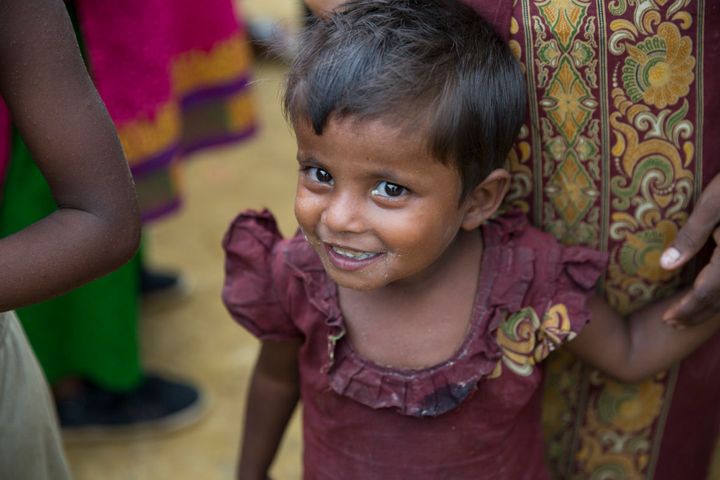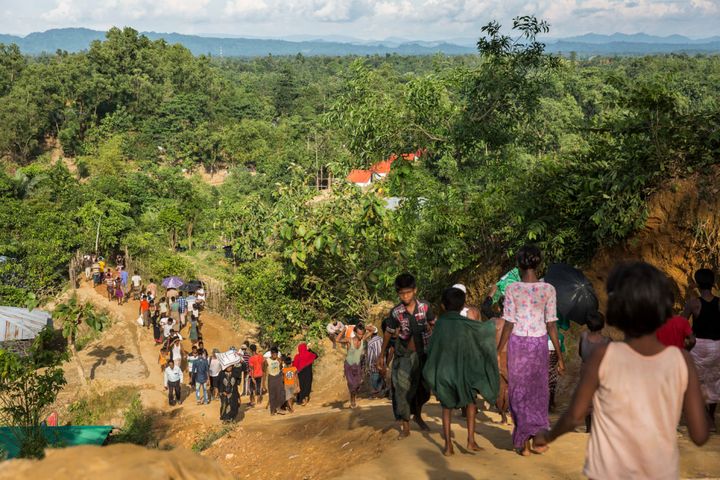Outbreaks of violence in Rakhine State, Myanmar, have forced hundreds of thousands of Rohingya people to flee their homes. There are numerous reports of widespread violence against men, women and children. Here are five things you need to know about the deepening crisis.
Often described as the “world’s most persecuted minority,” the Rohingya are a predominantly Muslim ethnic group, mostly concentrated in Rakhine, one of Myanmar’s poorest states. The Rohingya have lived in Myanmar for generations, many migrating from Bangladesh during British rule. After gaining independence, Myanmar, a majority Buddhist nation, refused to acknowledge the Rohingya as citizens, rendering them a stateless people.

Khaleda*, a new arrival at Moynadhona refugee camp for Rohingya in Cox’s Bazar, Bangladesh. *Name changed for security
Without recognition as citizens or permanent residents of the country, the Rohingya have limited access to education, jobs, and health services, resulting in chronic poverty and marginalization. Violence targeting Rohingya over the last several decades has driven hundreds of thousands to neighboring countries.
More than half a million Rohingya people have crossed into Bangladesh since August 25, 2017, fleeing ethnic violence in Rakhine State in Myanmar’s southwest. More than a third of Myanmar’s Rohingya population — roughly 1.1 million people — are now seeking safety elsewhere.

Rohingya refugees at Hakim Para in Cox’s Bazar, Bangladesh. Myanmar is less than two miles away, visible in the distance.
The mass exodus has increased the total Rohingya population in Bangladesh to some 800,000. In particular, the number of Rohingya people in Bangladesh’s Cox’s Bazar area has nearly tripled, and over half of the new arrivals are still living in informal settlements with little or no shelter, food, clean water, or sanitation. Most are completely dependent on support from aid agencies.
People are in urgent need of shelter, medical care, food, water, and sanitation facilities as they arrive exhausted and traumatized into overflowing camps and settlements.

Layru* and her two-year-old daughter Hala* at a Concern nutrition support center at Hakim Para camp in Bangladesh. Hala weighed less than 12 pounds when admitted. Layru says the family walked for 15 days to escape Myanmar, with little or no food along the way. She has three other children. *Names changed for security
It is currently monsoon season in Bangladesh, and the ongoing rains threaten to create an even deeper health emergency. Without proper water and sanitation facilities, waterborne illnesses can spread quickly in crowded camps, posing a particular risk to children and older people.
Concern is on the ground providing 48,000 Rohingya refugees with food rations and are working to deliver lifesaving nutrition support to 100,000 people — mainly children and pregnant or breastfeeding women. Soon we hope to provide water, shelter, and ongoing food assistance to more than 100,000 people.
Our response in 60 seconds
You can help us reach more Rohingya families in Bangladesh — and save more lives by visiting www.concernusa.org.
